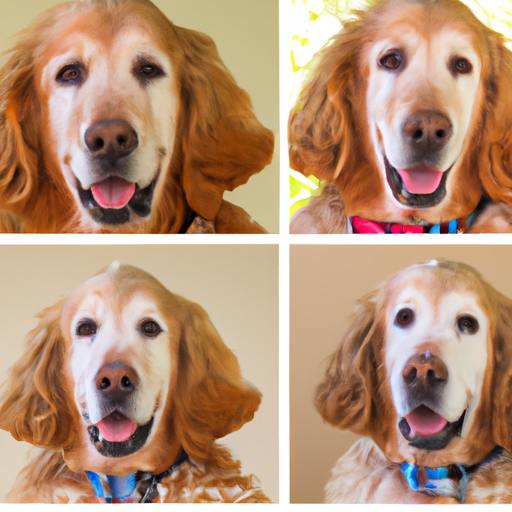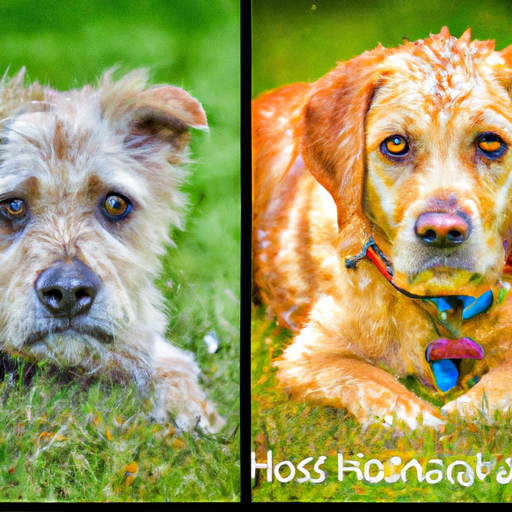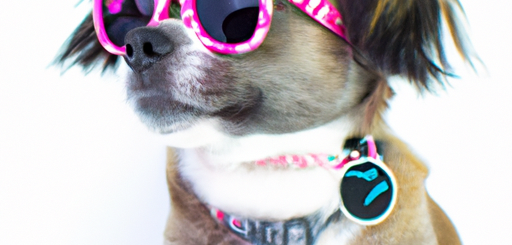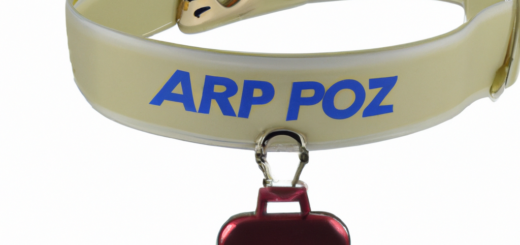From Pups To Seniors: A Complete Dog Ageing Timeline You Should Know
In this article, you will learn all about the different stages of a dog’s life. We will explore the timeline of a dog’s aging process, from when they are playful pups to wise and gentle seniors. By understanding these different stages, you will be able to give your furry friend the love and care they need at every age. So, let’s embark on this journey and discover the amazing world of dog aging!

This image is property of images.pexels.com.
Puppyhood
Birth
Puppyhood begins with the birth of a puppy. Puppies are usually born in a litter, with their brothers and sisters. They are very tiny and helpless when they are born, just like human babies. They rely on their mother to take care of them and keep them warm.
Neonatal period
During the neonatal period, which lasts from birth to about two weeks old, puppies spend most of their time sleeping and eating. They can’t see or hear very well yet, and their eyes and ears are still closed. They depend on their mother to feed them and keep them clean.
Transitional period
Between two to four weeks old, puppies go through the transitional period. Their eyes and ears start to open, and they begin to explore their surroundings. They can start to walk and play with their littermates. They may also start to eat solid food, in addition to their mother’s milk.
Socialization period
The socialization period is a very important time for puppies. It usually begins when they are about three weeks old and lasts until they are around twelve weeks old. During this time, puppies learn how to interact with other dogs and humans. They get to meet new people, explore new environments, and experience new things. It helps them become confident and well-rounded dogs as they grow up.
Adolescence
Physical changes
As puppies enter adolescence, they go through many physical changes. They start to grow bigger and their bodies become more muscular. You may notice that their fur changes and becomes thicker or longer. They may also start to develop adult teeth, replacing their baby teeth.
Behavioral changes
Along with the physical changes, adolescent dogs also go through behavioral changes. They may become more independent and test their boundaries. They might start to show signs of dominance or become more interested in exploring their surroundings. Sometimes, they may even seem a bit moody or temperamental.
Training challenges
Training adolescent dogs can be a bit challenging. They may become easily distracted and have a shorter attention span. However, with patience and consistent training, they can still learn new commands and become well-behaved adults. It’s important to continue training and reinforcing positive behaviors during this stage.

This image is property of images.pexels.com.
Young Adulthood
Maturity
Young adulthood is the time when dogs reach their full physical and sexual maturity. They are no longer puppies, but they are not yet considered senior dogs. They have grown into their adult size and shape, and their personalities are more defined.
Peak physical condition
During young adulthood, dogs are usually in their best physical condition. They have a lot of energy and enjoy playing and exercising. They are strong, agile, and can keep up with their owners on walks or runs. It’s important to provide regular exercise and mental stimulation to keep them happy and healthy.
Establishing routines
This is a good time to establish routines for your dog. Dogs thrive on structure and consistency. Establishing a regular feeding schedule, exercise routine, and training regimen can help your dog feel secure and well-adjusted. It also makes it easier for you to manage their daily care.
Maintenance activities
In young adulthood, dogs still require regular maintenance activities to keep them healthy. This includes grooming, such as brushing their coat and keeping their nails trimmed. They will also require regular vaccinations and check-ups with the veterinarian to ensure they stay in good health.
Midlife
Physical changes
Just like humans, dogs go through physical changes as they enter midlife. They may start to develop gray hairs or lose some of their natural vitality. Their joints may become a little stiffer, and they may experience a decrease in muscle mass.
Common health issues
During midlife, dogs are more prone to certain health issues. Dental problems, such as gum disease or tooth decay, become more common. They may also start to experience joint problems, like arthritis, which can cause them to move more slowly or have difficulty getting up. Regular visits to the veterinarian and a healthy diet can help manage these issues.
Diet and exercise adjustments
As dogs enter midlife, their nutritional needs may change. They may require a diet that is specifically formulated for mature dogs to support their overall health. Additionally, it’s important to adjust their exercise routine to accommodate any physical limitations they may develop. Low-impact exercises, like swimming or gentle walks, can help keep them active without causing discomfort.
Monitoring cognitive functions
Midlife is also a time when dogs may start to experience cognitive changes. They may become a bit forgetful or seem less interested in their usual activities. It’s important to monitor their cognitive functions and provide mental stimulation, such as puzzle toys or interactive games, to keep their minds sharp.

This image is property of images.pexels.com.
Senior Years
Transition into old age
As dogs enter their senior years, they may start to slow down and show signs of aging. They may sleep more, have less energy, and become less interested in playing or going for long walks. It’s important to provide them with a comfortable and safe environment where they can relax and take it easy.
Age-related conditions
Senior dogs are more prone to age-related conditions, such as arthritis, vision or hearing loss, and cognitive decline. Regular visits to the veterinarian and appropriate medication or treatment can help manage these conditions and improve their quality of life.
Nutritional changes
Senior dogs may require a special diet that is tailored to their needs. They may have a slower metabolism and require fewer calories. Their diet may need to be more easily digestible and contain specific nutrients to support their aging bodies. Consult with your veterinarian to ensure you are feeding your senior dog the right food.
Reduced mobility and exercise
Due to the effects of aging, senior dogs may have reduced mobility or difficulty moving around. They may not be able to go on long walks or play like they used to. However, it’s still important to provide them with regular exercise appropriate for their abilities. Short, gentle walks and low-impact exercises can help keep them mobile and maintain their muscle strength.
Eight Weeks Old
Leaving the litter
At around eight weeks old, puppies are ready to leave their litter and join their new families. This can be an exciting but also a bit scary time for them. They may miss their littermates and feel nervous in their new surroundings. It’s important to give them lots of love, patience, and reassurance during this transition.
Beginning socialization
Once they leave the litter, it’s time to begin socializing your puppy. Introduce them to new people, other animals, and different environments. This helps them become comfortable and confident in various situations, which is essential for their overall well-being.
Vaccination schedule
At eight weeks old, puppies should start their vaccination schedule. Vaccinations help protect them against common diseases and keep them healthy. Your veterinarian will provide you with a vaccination schedule and advise on what vaccines your puppy needs.

Four Months Old
Completing primary vaccinations
By four months old, puppies should have completed their primary vaccinations. These vaccinations are necessary to protect them against various diseases, such as distemper and parvovirus. Regular booster shots may be required to maintain their immunity.
Addressing teething
At around four months old, puppies start teething. This means their baby teeth start to fall out, and their adult teeth start to come in. They may experience discomfort and have a strong desire to chew on things. Provide them with appropriate chew toys to help soothe their gums and protect your belongings.
Basic obedience training
Four months old is also a good time to start basic obedience training. Teaching your puppy commands like sit, stay, and come can help them become well-behaved adults. Use positive reinforcement techniques, such as treats and praise, to reward their good behavior.
Six Months Old
Sexual maturity
At around six months old, puppies reach sexual maturity. This means they may start to show interest in mating and can potentially reproduce. It’s important to consider spaying or neutering your dog to prevent unwanted pregnancies and reduce the risk of certain health issues. Consult with your veterinarian for the best timing and options for your puppy.
Consolidating training
By six months old, your puppy should have a good foundation of basic obedience training. This is the time to consolidate their training and continue teaching them more advanced commands. Consistency and positive reinforcement remain key during this stage.
Adjusting diet
As your puppy reaches six months old, their dietary needs may change. Speak to your veterinarian about transitioning them to adult dog food. Adult dog food contains the right balance of nutrients to support their growing needs and overall health.

One Year Old
Full adult size reached
By one year old, most dogs have reached their full adult size. They are no longer growing and have become the dogs they will be for the rest of their lives. Some larger breeds may continue to grow and develop for a little longer.
Final vaccinations
Around one year old, dogs may require their final vaccinations. These vaccinations are important to ensure ongoing protection against diseases. Your veterinarian will provide you with the necessary information and schedule for these vaccinations.
Transitioning to adult dog food
At one year old, dogs should be transitioned fully to adult dog food. Adult dog food is formulated to meet their nutritional needs as fully grown adults. Make sure to choose a high-quality dog food that is appropriate for your dog’s size, breed, and any specific health concerns they may have.
Five Years Old
First signs of aging
Around five years old, dogs may start to show the first signs of aging. They may become a bit slower, less energetic, or show some gray hairs on their face or body. While these changes are normal, it’s important to monitor your dog’s overall health and consult with your veterinarian if you notice any significant changes.
Health check-ups
Regular health check-ups become even more important as dogs enter their middle years. These check-ups allow veterinarians to monitor their overall health, detect any potential issues early, and provide appropriate treatments or interventions.
Special diet considerations
Depending on your dog’s breed, size, and overall health, they may require a special diet as they age. Some dogs may benefit from joint supplements or a diet tailored to specific medical conditions, such as kidney or heart disease. Consult with your veterinarian to determine the best diet for your aging dog.
With proper care and attention at each stage of their lives, dogs can lead happy and healthy lives from puppyhood to their senior years. Understanding the different stages of a dog’s life and providing them with the appropriate care and support will ensure they have the best quality of life possible.









